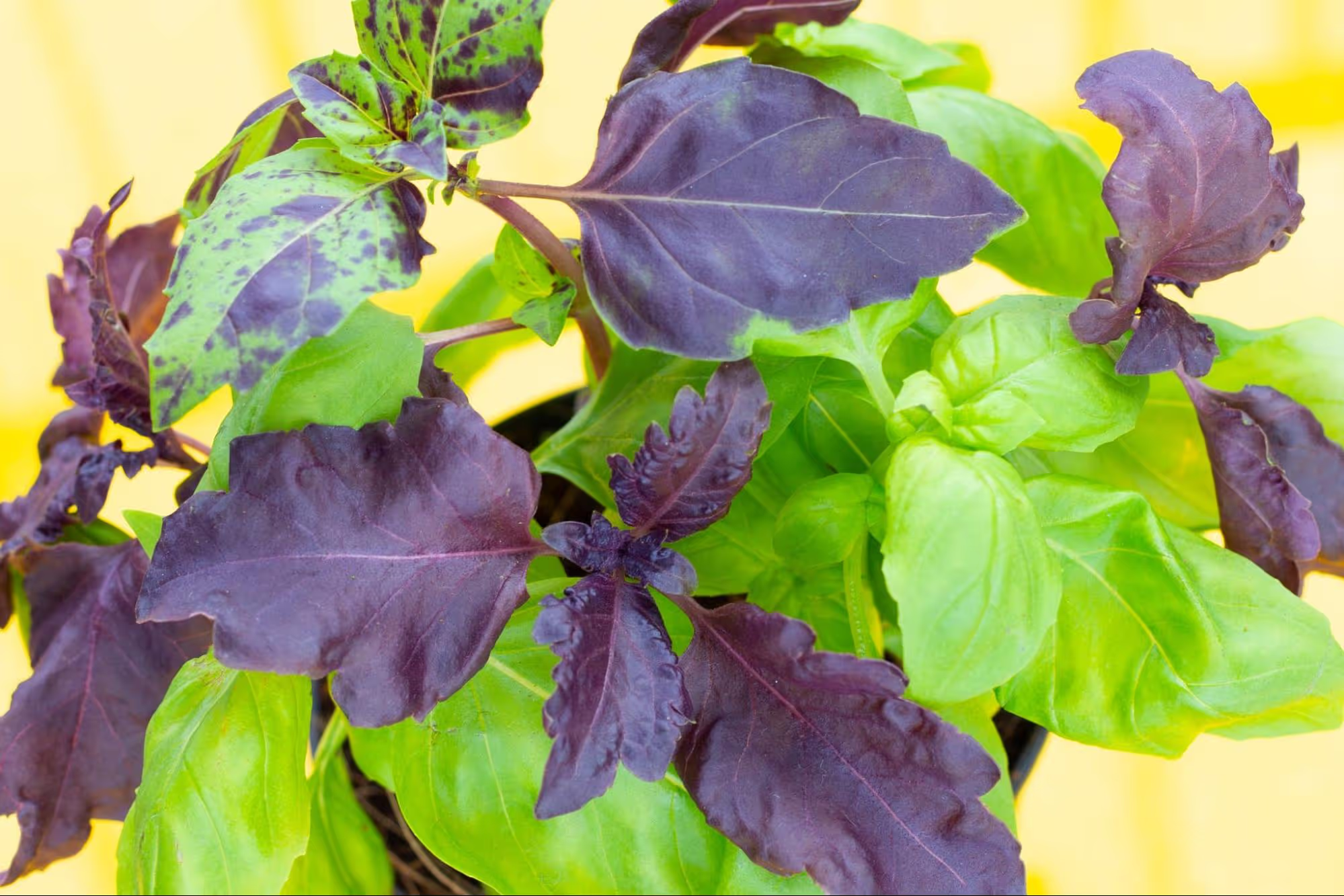
Basil is a plant widely used in kitchens around the world, also valued for its medicinal properties. Although most recognized in its green form, this plant comes in various color and shape variants. Green, purple, and red basil are not only aesthetically different but also indicate variations in taste, aroma, and even nutritional values.
Green basil is the most well-known and widespread variety. Its leaves are light green and are commonly used in various dishes, from pasta to salads, as well as in tomato-based recipes.
Flavor and Aroma
Green basil has a classic, refreshing, and slightly peppery taste with a mild hint of spice. Its aroma is distinctive, reminiscent of sweet, herbal notes, making it ideal for use in dishes like pesto, soups, and Italian salads.
Nutritional Value
Green basil is rich in vitamin K, essential for bone and cardiovascular health, and vitamin A, which helps maintain vision. It is also a source of antioxidants that help protect the body from oxidative stress.
Purple basil is a special variety found in many Asian and Mediterranean cuisines. Its dark purple leaves contain natural anthocyanins, compounds also found in blueberries and grapes.
Flavor and Aroma
Purple basil has a stronger, spicier, and somewhat more pungent flavor compared to green basil. Some describe its taste as a blend of basil’s usual spiciness with a hint of lavender, making it perfect for use in Asian dishes such as Thai and Vietnamese cuisine. It is also great for preparing decorative versions of dishes, as its intense color adds visual appeal.
Nutritional Value
Like green basil, purple basil contains vitamins and minerals but stands out due to its high anthocyanin content. These compounds are known for their antioxidant properties, which may help reduce inflammation and improve heart health. Purple basil is also a good source of vitamin C, which strengthens immunity and aids in skin regeneration.
Red basil, a rarer variety, has an intense red-purple color and a distinctive aroma. This variety is popular in some Asian countries but is increasingly used in Western cuisines for its decorative value and unique flavor.
Flavor and Aroma
Red basil is generally sweeter and has milder spicy notes. Its flavor can remind one of fragrant herbs with hints of spices like cloves. Though not as pungent as purple basil, red basil has a richer, more rounded taste, making it a great match for fruit, salads, and dishes with chicken or pork.
Nutritional Value
Red basil contains significant amounts of vitamins A and C, and its red color indicates the presence of anthocyanins, which have strong antioxidant properties. Additionally, red basil is rich in minerals like calcium, magnesium, and potassium, which are essential for bone, heart, and muscle health.
When it comes to using these varieties of basil in the kitchen, each one brings unique advantages:
Basil in different colors brings a wealth of flavors, aromas, and nutritional values that enrich a variety of dishes. Green basil is perfect for everyday use in various cuisines, while purple and red basils offer specific characteristics that enhance both taste and appearance, whether used in Asian specialties or as a decorative element in salads and meat dishes. Regardless of the color, each variety of basil provides unique benefits that can elevate dishes and contribute to overall health. Experimenting with different types of basil can enhance culinary skills and provide a new level of enjoyment in food.